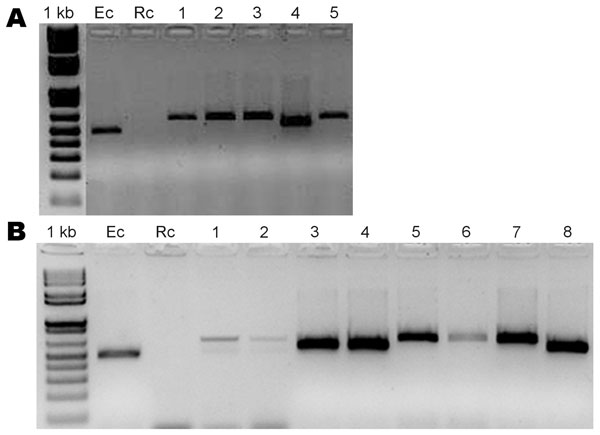Volume 14, Number 12—December 2008
Letter
Molecular Detection of Ehrlichia chaffeensis in Amblyomma parvum Ticks, Argentina
Figure

Figure. Agarose gel electrophoresis of PCR products amplified with Ehrlichia chaffeensis (Ec) variable-length PCR target primers. Rc, Rickettsia conorii (negative control). The sources of DNA templates used for amplification are Amblyomma parvum ticks collected from different hosts: A) 1–5 humans; B) 1 dog, 2 foxes, 3–6 cattle, 7–8 goats. Variable amplicon size represents different genotypes that result from differences in the number of tandem repeats in the 5′ end of the variable-length PCR target; PCR products’ sizes range from 500 bp to 600 bp.
Page created: July 22, 2010
Page updated: July 22, 2010
Page reviewed: July 22, 2010
The conclusions, findings, and opinions expressed by authors contributing to this journal do not necessarily reflect the official position of the U.S. Department of Health and Human Services, the Public Health Service, the Centers for Disease Control and Prevention, or the authors' affiliated institutions. Use of trade names is for identification only and does not imply endorsement by any of the groups named above.